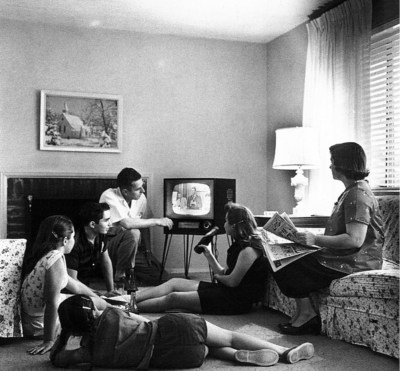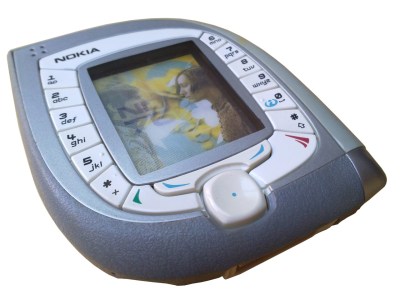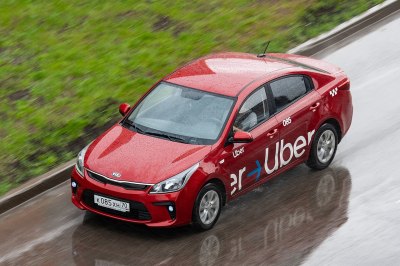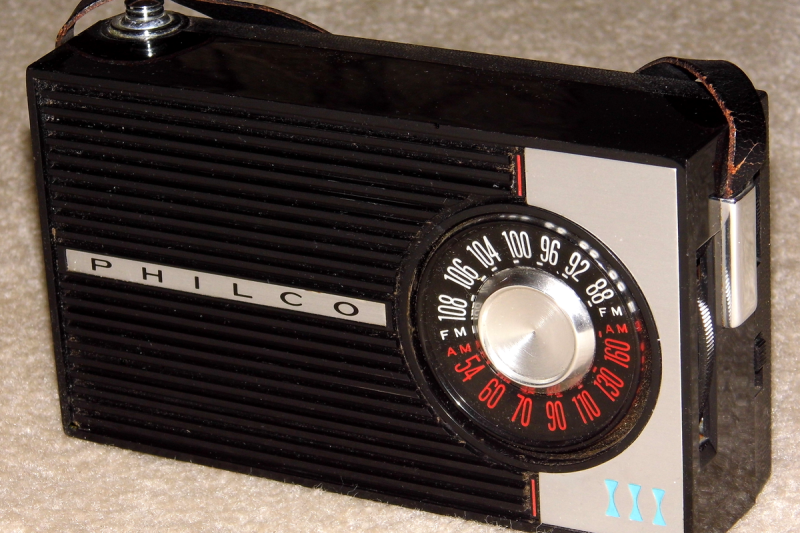Our smartphones have become our constant companions over the last decade, and it’s often said that they have been such a success because they’ve absorbed the features of so many of the other devices we used to carry. PDA? Check. Pager? Check. Flashlight? Check. Camera? Check. MP3 player? Of course, and the list goes on. But alongside all that portable tech there’s a wider effect on less portable technology, and it’s one that even has a social aspect to it as well. In simple terms, there’s a generational divide that the smartphone has brought into focus, between older people who consume media in ways born in the analogue age, and younger people for whom their media experience is customized and definitely non-linear.
The Kids Just Don’t Listen To The Radio Any More

The effect of this has been to see a slow erosion of the once-mighty reach of radio and TV broadcasters, and with that loss of listenership has come less of a need for the older technologies they relied on. Which leaves a fascinating question here at Hackaday, what is going to happen to all that spectrum? Indeed, there’s a deeper question behind all that, is lower frequency spectrum even that valuable any more?
In the old days, we had analogue TV in several-MHz-wide channels spread across a large part of the UHF bands and some smaller chunks of VHF. Among that we had 20 MHz of FM broadcasting around the 100 MHz mark, and disregarding shortwave, then a MHz of AM down around 1 MHz. Europeans got a bonus band down there too: we’ve got Long Wave, over 100 kHz of AM goodness roughly centered around 200 kHz.
The last twenty years have seen a shift to digital for all broadcast TV, with for Americans at least a bunch of those UHF frequencies being snapped up for data services. Radio has gone digital too, for Europeans with DAB in the 200 MHz-ish band, but we’ve still got a fairly thriving FM band even if governments are making noises about moving FM stations to digital. Meanwhile down at the bottom of the dial those AM and long wave bands are in terminal decline, with transmitters going silent across the board. Perhaps Americans still have more AM stations than Europeans, but we’d wager they are no longer the premium money spots.
Enthusiasts may point to digital AM systems such as DRM (Digital Radio Mondial) as their saviour, but can format music radio compete against streaming at all? In a few years then, it’s likely that the AM and longwave broadcast bands will be empty, and possibly not too far behind them the FM band too. What happens then, is the interesting part. Will they be sold on to new uses, or will they lie idle, waiting for a fresh purpose? It’s a question to which the answer is more complex than meets the eye, because it leaves the technical for the political.
How One Auction Broke An Industry Forever

Everybody likes free cash, but governments like it especially, and when it comes to radio spectrum they see it all as a huge pile of dollars, pounds, Euros, or whatever just waiting to be unlocked. Where this is being written in the UK, this is especially so, and for that we can thank the auction round for 3G mobile phones a couple of decades ago. The various companies entered an unsustainable bidding war and spent far too much on their allocations, and aside from nearly bankrupting a swath of the UK tech industry for a few years, they cemented an idea in the minds of British and other European politicians that free spectrum was a bonanza. Thus there was a keen appetite to empty whatever space they could find and flog it off to the highest bidder, something they found wasn’t as easy as they thought.
What happened next was that subsequent auctions proved to be damp squibs as potential buyers shied away from a 3G-style disaster. Meanwhile as 3G and then 4G services became ubiquitous they claimed another function previously served by an analogue device. PMR, the type of mobile radios that might once have been found in fleet vehicles everywhere, moved first from low VHF frequencies to switched 200 MHz services, and then followed everything else onto the mobile phone networks. Where once your taxi might have had a VHF radio with a switchboard, now the driver uses an app on a phone.
What To Do With Fading 20th Century Signals?

The upshot of this has been obvious to anyone with an SDR, where once there were plenty of channels both digital and analogue to be found with a scanner across VHF and UHF, those once-valuable bands are increasingly empty save for the airband and public services. We’re sure that governments would charge us a heap of money for a licence where our local taxi used to be, but how many of them do they issue now compared to decades ago? Not a lot, we’d wager.
What we’re seeing is in fact the sunset of 20th-century models of radio communication, in which range was valued over bandwidth. The short range and high bandwidth of a cell tower is infinitely more valuable when the landscape is dotted with them than the county or country-wide range and low bandwidth of a VHF channel or an AM broadcast frequency, so the importance of the latter two is inevitably waning. Over time we’ll see yet more services move to data streams, meaning that eventually save for a few radio amateurs there will be previous little left in the first 100 MHz or so beside the military and a few very specialised services.
So in years to come, what will happen to these bands? We very much doubt they’ll become a free-for-all, as a badly made AM pirate spewing kilowatts of harmonics audible in the gigahertz is not a desirable outcome for anyone. Instead we’re guessing they’ll languish, forgotten by all but a few enthusiasts polishing their vintage Philco tabletop radios. It’s sad, because we could imagine a vibrant future for an AM band in a world where limited power unlicensed microbroadcast transmissions were legal. This is to some extent already the case in some parts of the world, but if that were to become a more general thing with permissible power in the region of a watt or two then we could see large numbers of short-range stations co-existing across the dial.
We’d love it if that were to happen, but sadly we aren’t holding our breath.
Header: “Vintage Philco Two-Band (AM-FM) Transistor Radio” by Joe Haupt
















No podcast will replace radio as a source for information about current emergencies such as the one California is going through right now. That is tailor made for news radio to talk about evacuation centers or staying warm and alive under the 4 meters of snow they have.
Cell service has been dead for a week in affected areas, along with the power grid. Only radio is getting through.
The “Legacy Broadcast Bands” are NOT going to go dark. Possibly/probably AM, but both AM and FM? No way. There will certainly be an attempt to phase them out, but the first time there is a disaster such as a bad storm, a flood or a cyclone/tornado/hurricane where the cell phone and Internet infrastructure goes down and no one can get information because all the radio stations are gone you will very quickly see major backpedalling by governments and a suspension of the phase-out.
There lots of car and trucks still using radio , the car maker don’t want to include the radio and have SiriusXM. Remember the days of EIB when Rush was on AM radio. When I heard that song play I knew what time it was and I was going to have a better day. The problem is AM has lost a lot of good stars now. How long Glen Beck stays on who knows.
Write ups like this is the added problem. Some keyboard warrior spouting off about a whole bunch of uneducated nothing. Anyone that remotely thinks that AM and FM will fade away and cellular / I-thingies will take over certainly is living in some other realm. The data services IE internet is a long ways from being 100% reliable. To think otherwise is just foolish.
Guess you haven’t been on the shortwave amateur bands lately… especially in Europe. There on fire with use. It’s often hard to even find a quiet or unused space on the frequencies. I’d say analog radio itself is far from lapsing into obscurity. Done for ..I think they said that about vinyl records once too. Infact I’d say a lot of people I know are fed up with digital and internet radio/
Still listen to the radio frequently here – its free, rather than a $1,200+ device that’s a pain to deal with, coupled with an expensive data plan. No thank you.